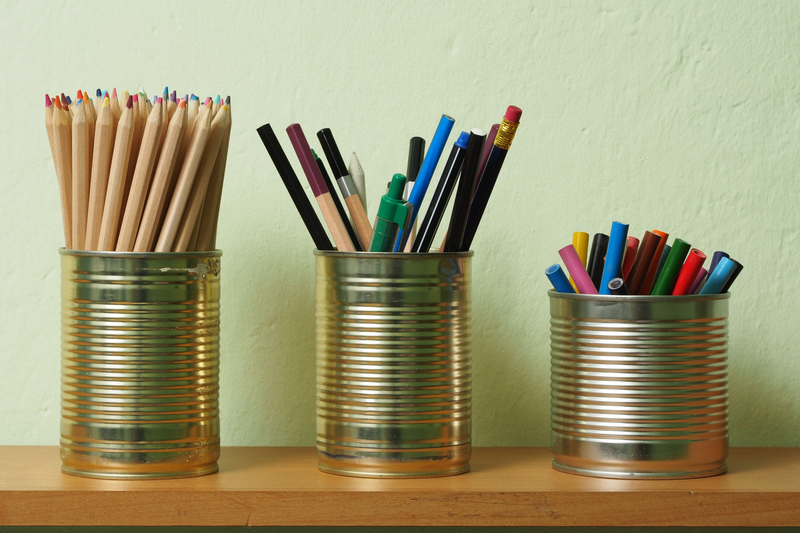Efficient Strategies to Budget Your Bulky Waste Item Disposal
Many homeowners and businesses face the recurring challenge of disposing of bulky waste items--large, unwanted goods such as furniture, old appliances, mattresses, and construction debris. Managing these heavy, awkward objects can be overwhelming and costly. However, implementing efficient strategies for budget-friendly bulky waste disposal can reduce financial strain and environmental impact. This guide will teach you how to plan, evaluate, and execute cost-effective junk removal and responsible disposal solutions.

Understanding Bulky Waste and Its Challenges
Bulky waste refers to large items that cannot be disposed of through regular waste collection services. These objects are typically unsuitable for standard waste bins due to their size, weight, or material composition. Examples include:
- Old sofas, beds, and mattresses
- Broken refrigerators, stoves, or dishwashers
- Large carpets and rugs
- Garden waste like tree branches and sheds
- Renovation debris and construction materials
Disposing of these large items is not as simple as leaving them on the curb. Local councils may have restrictions on what they will collect, and private junk removers often charge premium rates. Therefore, efficient bulky waste item disposal requires strategy, careful planning, and an awareness of neighborhood regulations and sustainable alternatives.
Why Budgeting Is Essential for Bulky Waste Removal
Discarding oversized items can incur unexpected expenses--from disposal fees and transportation costs to fines for improper dumping. By learning how to budget the disposal of large waste items, you'll:
- Save money over time
- Avoid surprise fees or penalties
- Reduce your environmental footprint through responsible choices
- Benefit from organized, clutter-free spaces
Our comprehensive guide shares cost-effective bulky item disposal strategies that help you streamline the process, eliminate unnecessary expenses, and keep your space clean.
Step 1: Evaluate Your Bulky Waste
Take Inventory
The first step to responsible and budget-friendly disposal of big waste items is to take stock of what you need to remove. Create a detailed list by:
- Walking through each room, garage, and outdoor space
- Documenting every oversized item for removal
- Noting item size, material (e.g., metal, wood, electronics), and condition
- Grouping similar objects to facilitate easier loading and disposal
Tip: Photograph products before removal for records and to potentially include in donation or resale listings.
Assess Condition and Reusability
Ask yourself:
- Is it broken beyond repair or can it be repurposed?
- Would someone else find this useful?
- Are valuable or hazardous components present (e.g., metals, batteries, chemicals)?
Making these assessments helps uncover opportunities for reuse or recycling--which can both lower your disposal costs and support sustainability.
Step 2: Research Local Bulky Waste Disposal Options
Not every area has the same waste collection services. This means pricing and bulky waste removal options may vary. Explore these cost-effective possibilities:
1. Council Pickup and Community Services
- Book a Council Collection: Many municipalities offer limited free or low-cost bulky waste pickups annually. Find your council's policy and book in advance. Note permitted types and volume.
- Drop-off Centers: Some local waste transfer stations or recycling centers accept bulky items, often for nominal fees by weight or item type.
- Neighborhood Collection Days: Community cleanups or bulk waste events let residents dispose of large waste at reduced or no cost.
2. Private Bulky Waste Collection Services
If local government options are limited, private junk removal companies can help. Keep disposal costs low by:
- Getting 3-5 quotes for comparison
- Opting for consolidated pickups (bulk volume usually costs less per item)
- Checking for hidden fees (labor, transport, landfill expenses)
- Asking if they recycle or donate usable items
3. Recycling, Reuse, and Donation
- Appliance and electronics shops often collect old units when you buy replacements
- Charities may accept furniture, beds, or whitegoods in good condition
- Scrap metal recyclers or specialized recyclers may take large metal objects or e-waste
Pro Tip: Many non-profits offer free or low-cost pickups, significantly reducing your bulky waste item disposal expenses.
Step 3: Optimize Transportation and Labor Costs
DIY Bulky Item Hauling
Renting a trailer or van can prove economical if you have multiple items, especially with access to affordable drop-off centers. Boost transportation efficiency by:
- Borrowing or renting a suitable vehicle instead of hiring a full-service company
- Pooling efforts with neighbors or friends -- splitting truck rentals and disposal fees
- Taking advantage of off-peak times to avoid queues and higher pricing
When loading, disassemble furniture or bulky appliances to optimize space and reduce trips.
Group Items for Pickup
If using a service provider, combine all waste in one collection. Most providers charge less per item for larger loads. Coordinate with neighbors, landlords, or office mates for joint pickups and cost-sharing.
Step 4: Smartly Reduce and Prevent Bulky Waste Generation
Adopt Minimalist Purchasing Habits
The most budget-efficient bulky item disposal strategy is simple: don't create unnecessary waste. Buy high-quality, long-lasting furniture and appliances. Prioritize multipurpose, modular designs that can adapt to changing needs.
- Choose products with repair, resale, and recycling potential
- Research manufacturer or retailer take-back programs
- Use circular economy platforms for second-hand buying and selling
Repair and Refurbish Where Possible
Many bulky items are discarded due to minor repairs. Extend item life by:
- Fixing broken parts or covers
- Upholstering sofas instead of replacing
- Refinishing wood or metal frames
- Utilizing repair cafes or local craftspeople
These efforts not only save money, but also decrease waste generation.
Step 5: Sell, Swap, or Donate Large Items
How to Monetize Bulky Waste and Save on Disposal
One of the most cost-effective strategies for disposing of large unwanted items is to monetize or donate them. Explore options such as:
- Online Marketplaces: Platforms like Facebook Marketplace, Craigslist, or local classifieds often see quick turnover for free or cheap bulky goods. List with clear photos and honest descriptions.
- Community Swaps: Host a swap event or use neighborhood forums. Someone else's need can relieve your disposal burden for free.
- Charity Donations: Many local charities collect large furniture and appliances to resell or donate. Always check they accept these items and coordinate a pickup slot.
- Material Recyclers: Scrap metal, appliance, and electronics recyclers can pay for valuable materials or responsibly process hazardous waste.
These alternatives not only help minimize bulky waste disposal costs but support community needs and environmental sustainability.
Step 6: Understand and Avoid Hidden Bulky Waste Disposal Fees
Read the Fine Print
When budgeting for bulky item removal, be aware of possible extra charges, such as:
- Labor for carrying items from inside your property
- Charges for difficult-to-move items
- Fees for special handling of hazardous materials (e.g., asbestos, chemicals, electronics)
- Surcharges for exceeding weight or size limits
Always ask for a detailed quote up front and clarify what's included in the fee structure. Choose transparent providers to prevent nasty surprises.
Check for Vouchers, Subsidies, and Discounts
Many councils, non-profits, or government programs offer:
- Annual waste disposal vouchers or coupons
- Senior, disability, or low-income discounts
- Free disposal for certain item types, like e-waste or mattresses
Take advantage of available support to further bring down your large item waste disposal costs.
Step 7: Plan Ahead for Future Bulky Waste Events
Routine Decluttering and Scheduled Removal
Consider creating a yearly or biannual schedule for clearing out bulky items from your home, rental, or business. This approach helps:
- Spread costs out over the year, rather than having a large one-time expense
- Take advantage of scheduled council cleanups or events
- Prevent safety and fire hazards from accumulating clutter
Join or Organize Community Disposal Initiatives
Many neighborhoods organize collaborative bulk waste days, which may feature free or subsidized waste collection. By engaging with your community, you not only reduce disposal costs but also build stronger local networks.
Bonus: Eco-Friendly and Creative Disposal Solutions
Upcycling and DIY Projects
If you're handy or creative, consider turning bulky waste into new treasures. For instance:
- Transform shelving, pallets, or doors into garden planters or furniture
- Repurpose metal bed frames into trellises or storage racks
- Convert old mattresses into insulation or pet beds
These projects save disposal costs and contribute positively to the environment.
Partner With Sustainability Programs
Many cities run "zero waste" or "clean city" initiatives aimed at minimizing landfill waste. Partner with these programs to find innovative bulky waste solutions that may also be economical or even free.

Recap: Key Ways to Save on Bulky Waste Item Disposal
- Assess and categorize your bulky items before action
- Research all available disposal, donation, and recycling options in your area
- Combine tasks (with neighbors or across property) for volume discounts
- Monetize, swap, or donate usable items before tossing
- Check for free council or community collection dates and plan ahead
- Ask for complete pricing details and avoid hidden charges
- Adopt long-term strategies to minimize future bulky waste generation
Conclusion
Properly budgeting your bulky waste item disposal doesn't have to be stressful or expensive. With foresight, research, and creativity, you can develop a cost-effective plan for disposing of large, unwanted items in an environmentally responsible manner. By leveraging local resources, prioritizing reuse or donation, and staying informed about discounts, you can save money while contributing to a cleaner, greener community. Start your efficient bulky waste disposal journey today and transform an overwhelming task into a rewarding and sustainable practice!
